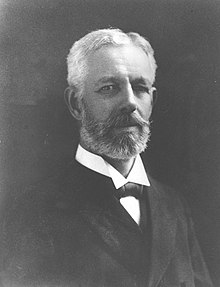Interlibrary loan

Inter-library loan (abbreviated ILL, sometimes called document delivery, document supply, inter-lending, inter-library services, inter-loan, or resource sharing) is a service that enables patrons of one library to borrow materials that are held by another library.[1]
Methods
After receiving a request, the borrowing library identifies potential lending libraries with the desired item. The lending library delivers the item physically or electronically, and the borrowing library receives the item and delivers it to their patron, and if necessary, arranges for its return. Sometimes, fees accompany interlibrary loan services.
Libraries can define what materials from their holdings are eligible for interlibrary loan. Many journal or database licenses specify whether a library can or cannot supply journal articles via ILL, with libraries negotiating for ILL eligibility.[2][3]
The International Organization for Standardization (ISO) developed ISO standards 10160 and 10161 to standardize terminology and define a set of communication protocols between interlibrary loan systems.[4][5]
History
Informal borrowing and lending between libraries has examples in Western Europe as early as the 8th century CE.[6]
In the 16th century, Nicolas-Claude Fabri de Peiresc unsuccessfully attempted to establish an interlibrary loan system between the Royal Library at the Louvre Palace in Paris and the Vatican Library in Rome.[7]
In 1876, Massachusetts librarian Samuel Swett Green published a proposal for an interlibrary loan system modeled on European examples, writing, "It would add greatly to the usefulness of our reference libraries if an agreement should be made to lend books to each other for short periods of time."[8]

In 1886, Joseph C. Rowell, librarian at the University of California, Berkeley, sought permission to begin an interlibrary loan program. In 1894, Rowell initiated U.C. Berkeley's first program of interlibrary lending with the California State Library.[9] In 1917, the American Library Association established a national code for interlibrary loan in the United States.[10]
In China, formalized interlibrary loan policies were established as early as 1924 through the Shanghai Library Constitution.[11]
In 1927, an increase in international lending and borrowing between libraries following the First World War led to the establishment of the International Federation of Library Associations and Institutions (IFLA). IFLA published the "International Resource Sharing and Document Delivery: Principles and Guidelines for Procedure" in 1954.[12]
In Great Britain, Kate Edith Pierce became the chair of the newly formed East Midlands Regional Library Bureau in 1935. Enabled by Carnegie Trust funding, the Bureau introduced formalized "Inter-Library Lending".[13]
The Ohio State University and others in Ohio began integrating campus library systems at an early date. In the 1960s, state funds supported development of the Ohio College Library Center, now the Online Computer Library Center (OCLC).[14]
In 1994, the Reference and User Services Association (RUSA) of the ALA (America Library Association) formed an ALA Interlibrary Loan Code for the United States.[15]
In 1997, following a flash flood that significantly damaged its physical journal holdings, Colorado State University developed RapidILL as a resource sharing solution.[16] The service has grown to include over 300 member libraries internationally, with most member libraries in the United States. In 2019, Ex Libris acquired RapidILL from CSU.[17]
Resource sharing networks
Libraries have established voluntary associations for resource sharing, organized on a regional or national basis, or through other affiliations such as university systems with multiple campuses, communities of libraries with related holdings and research interests, or established library consortia.
The International Federation of Library Associations and Institutions (IFLA) guides interlibrary loan policies internationally.[18]
North America
In the US, the Online Computer Library Center (OCLC) is used by public and academic libraries. Formerly, Research Libraries Group (RLG) was used primarily by academic libraries, but it merged with OCLC in July, 2006.[19] The Center for Research Libraries (CRL) is a major resource sharing network in North America with a buy-in membership system.[20] Other large resource sharing networks include Libraries Very Interested in Sharing (LVIS)[21] and Amigos.[22]
Medical libraries in the United States participate in the National Network of Libraries of Medicine to share resources. The National Library of Medicine developed the request routing system DOCLINE for this purpose.[23]
Africa
The South African Bibliographic and Information Network (SABINET) was developed in 1983 for the purposes of collection development and resource sharing across libraries in South Africa.[24]
In Ghana, the Ghana Inter-Library Lending and Document Delivery Network (GILLDDNET) pioneered resource sharing in West Africa. The network was replaced in 2004 by the Consortium of Academic and Research Libraries (CARLIGH).[25]
Central and South America
Consorcio Iberoamericano para la Educación en Ciencia y Tecnología (ISTEC) is a consortium and resource sharing network of 50 institutions across 17 countries in Latin America and the Iberian Peninsula, with a focus on science and technology materials.[26] Many ISTEC member libraries use the software Celsius, which was developed as part of the consortium initiative.[27]
Consorcio de Bibliotecas Universitarias de El Salvador (CBUES) is a resource sharing consortium of institutions in El Salvador with comments that there are other CBUES affiliated institutions along the Atlantic coast, including libraries from Costa Rica, Nicaragua, Mexico and Panama; however only El Salvadorian institutions are listed on CBUES's website.[28]
Europe
In France, the PEB ILL network services over 300 libraries using the SUPEB ILL software.[29]
In Germany, Gateway Bayern (GB) is the ILL network and tool for Bavarian libraries, including the Bavarian State Library.[30]
Asia
National Library of New Zealand (Te Puna Mātauranga o Aotearoa)DELNET, the Developing Library Network (formerly the Delhi Library Network), is a resource sharing network supporting India and South Asia.[31][32]
The National Diet Library of Japan serves as a resource sharing hub for Japanese-language materials domestically and internationally.[33]
Launched in 1998, China Academic Library and Information System (CALIS) is a Beijing-based academic library consortium that facilitates interlibrary loan among research libraries in China.[34]
Oceania
New Zealand utilizes the National Library of New Zealand[36].
References
- ^ lnterlibrary Loan Committee, Management and Operation of Public Services Section, Reference and Adult Services Division, American Library Association, National lnterlibrary Loan Code for the United States, 1993. RQ 33 no. 4 (Summer 1994).
- ^ Croft, Janet Brennan (2005-05-31). "Interlibrary Loan and Licensing". Journal of Library Administration. 42 (3–4): 41–53. doi:10.1300/J111v42n03_03. ISSN 0193-0826. S2CID 152664274.
- ^ Litsey, Ryan; Ketner, Kenny (2013-11-18). "Oh the possibilities: ebook lending and interlibrary loan". Interlending & Document Supply. 41 (4): 120–121. doi:10.1108/ILDS-09-2013-0027. ISSN 0264-1615.
- ^ "ISO 10160:2015". ISO. Retrieved 2023-03-12.
- ^ "ISO 10161-1:2014". ISO. Retrieved 2023-03-12.
- ^ Miguel, Teresa M. (2007). "Exchanging Books in Western Europe: A Brief History of International Interlibrary Loan". International Journal of Legal Information. 35 (3): 499–513. doi:10.1017/S073112650000247X. ISSN 0731-1265. S2CID 162691373.
- ^ Gravit, Francis W. "A Proposed Interlibrary Loan System in the Seventeenth Century." The Library Quarterly: Information, Community, Policy 16, no. 4 (1946): 331–34. JSTOR 4303518.
- ^ Green, Samuel (1876). "The Lending of Books to One Another by Libraries". Library Journal. 15 (16).
- ^ Nesta, Frederick (2019-01-14). "Consortia from past to future". Library Management. 40 (1/2): 12–22. doi:10.1108/LM-02-2018-0006. ISSN 0143-5124. S2CID 57969972.
- ^ Russell, Harold. "The Interlibrary Loan Code." ALA Bulletin 33, no. 5 (1939): 321–54. JSTOR 25690164.
- ^ Fang, Conghui (2007-08-21). "The history and development of interlibrary loans and document supply in China". Interlending & Document Supply. 35 (3): 145–153. doi:10.1108/02641610710780818. ISSN 0264-1615.
- ^ "Guidelines for Best Practice in Interlibrary Loan and Document Delivery". ifla.org. 2012.
- ^ Kerslake, Evelyn (2014-09-25). "Pierce, Kate Edith (1873–1966), librarian". Oxford Dictionary of National Biography. Vol. 1 (online ed.). Oxford University Press. doi:10.1093/ref:odnb/70123. ISBN 978-0-19-861412-8. (Subscription or UK public library membership required.)
- ^ "In the beginning [OCLC - Heritage]". 2012-10-04. Archived from the original on 4 October 2012. Retrieved 2024-12-12.
- ^ "Interlibrary Loan Code for the United States". RUSA. June 13, 2023. Retrieved August 14, 2023.
- ^ Breeding, Marshall (2019-08-01). "Ex Libris Acquires RapidILL". Smart Libraries Newsletter. 39 (8): 2–5.
- ^ "Ex Libris acquires RapidILL to help improve resource sharing among libraries | Built In Colorado". www.builtincolorado.com. Retrieved 2023-02-11.
- ^ "International Interlibrary Voucher Scheme". IFLA. Retrieved 2023-03-12.
- ^ "Mergers and acquisitions". OCLC. 2024-09-24. Retrieved 2024-12-12.
- ^ "Voting Membership | CRL". www.crl.edu. Retrieved 2024-12-12.
- ^ "Libraries Very Interested in Sharing". cyberdriveillinois.com.
- ^ "Amigos Library Services - Resource Sharing Through Technology". amigos.org.
- ^ "DOCLINE® System". www.nlm.nih.gov. Retrieved 2016-03-24.
- ^ Willemse, John; United Nations. Economic and Social Council; United Nations. Economic Commission for Africa (1995-04). The South African Bibliographic and Information Network (SABINET) as a model for library and information resource sharing. UN. ECA African Regional Symposium on Telematics for Development (1995, Apr.3-7 : Addis Ababa, Ethiopia). Addis Ababa :. © UN. ECA,. hdl:10855/9068
- ^ Nche Che, Eugene; Njiraine, Dorothy; Makori, Elisha (2022-09-22). "Impact of Library Consortia on Resource Sharing in Academic Libraries: Evidence From the University of Nairobi Library". Library Philosophy and Practice (E-journal).
- ^ Marvin, Stephen G (2015-08-17). "Resource sharing in Latin America". Interlending & Document Supply. 43 (3): 138–144. doi:10.1108/ILDS-05-2015-0015. ISSN 0264-1615.
- ^ Schmidt, LeEtta M., "Interlibrary Lending in Mexican, Caribbean, Central American, and South American Libraries" (2014). Academic Services Faculty and Staff Publications. 172. https://digitalcommons.usf.edu/tlas_pub/172
- ^ "Miembros – CBUES" (in Spanish). Retrieved 2024-12-12.
- ^ Menil, Céline (1999-12-01). "Interlibrary lending in France: the situation today". Interlending & Document Supply. 27 (4): 166–170. doi:10.1108/02641619910300602. ISSN 0264-1615.
- ^ "Interlibrary loan". www.bsb-muenchen.de. Retrieved 2024-12-12.
- ^ Kaul, Sangeeta (2010-06-01). "DELNET – the functional resource sharing library network: a success story from India". Interlending & Document Supply. 38 (2): 93–101. doi:10.1108/02641611011047169. ISSN 0264-1615.
- ^ "DELNET - About Us". delnet.in. Retrieved 2023-03-13.
- ^ "International Cooperation | National Diet Library". www.ndl.go.jp. Retrieved 2024-12-12.
- ^ Hongyang, Dai, Longji~Chen, Ling~Zhang (2000-09-01). "China Academic Library and Information System: an academic library consortium in China". Information Technology and Libraries. 19 (2). Archived from the original on 2024-02-29.
{{cite journal}}: CS1 maint: multiple names: authors list (link) - ^ "Trove". trove.nla.gov.au. Retrieved 2024-12-12.
- ^ natlib.govt.nz https://natlib.govt.nz/about-us. Retrieved 2024-12-12.
{{cite web}}: Missing or empty|title=(help)
Further reading
- Boucher, Virginia (1997). Interlibrary Loan Practices Handbook, 2nd Edition. Chicago and London: American Library Association.
- Frederiksen, Linda; Cummings, Joel; Cummings, Lara; Carroll, Diane (2011). "Ebooks and Interlibrary Loan: Licensed to Fill?". Journal of Interlibrary Loan, Document Delivery & Electronic Reserve. 21 (3): 117–131. doi:10.1080/1072303X.2011.585102. hdl:2376/4898. S2CID 62548634.
- Journal of Library Administration; Volume 23, Numbers 1–2 (subscription required), 1996: A special issue devoted to ILL.
- Levine-Clark, Michael (2011). "Whither ILL? Wither ILL: The Changing Nature of Resource Sharing for E-Books". Collaborative Librarianship. 3 (2): 71–72. doi:10.29087/2011.3.2.01. ISSN 1943-7528.
- Newcombe, Luxmoore. Library Co-operation in the British Isles. Practical Library Handbooks series, no. 4. London: G. Allen & Unwin, 1937.
